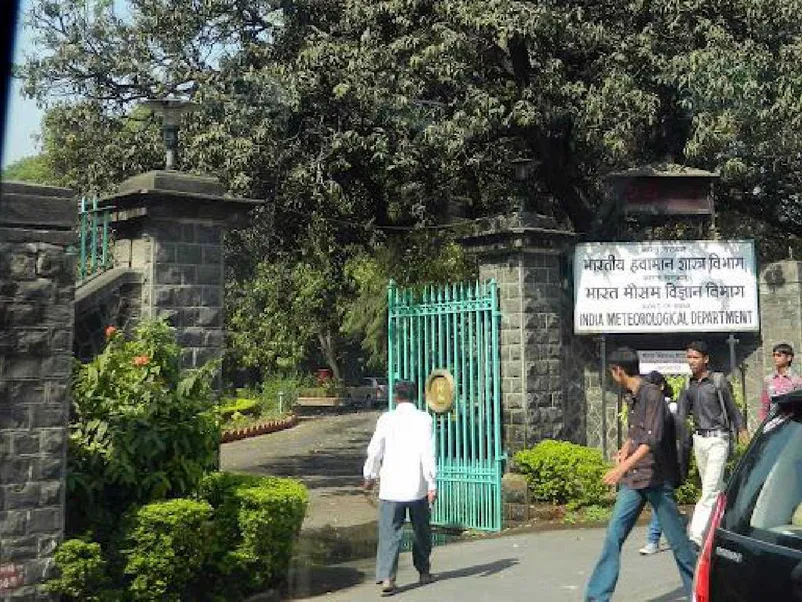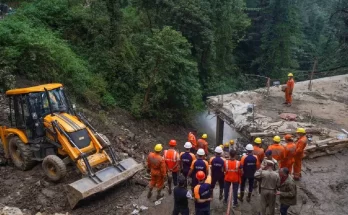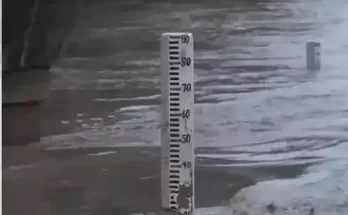The met agency has sought support in meteorological software applications and manufacturing observational equipment.

File photo of IMD office (Credit: Twitter)
New Delhi: Indian startups will soon contribute to manufacturing weather forecasting equipment. The India Meteorological Department (IMD) is all set to handhold startups for indigenous development of observational instruments, sensors, and even modelling software using Artificial Intelligence (AI).
In fact, Union Minister of Earth Sciences Kiren Rijiju has asked the private sector to manufacture sophisticated communications and weather equipment in public-private partnership (PPP) mode. “I also call upon commercial organisations in weather forecasting domain to integrate with IMD for a win-win proposition,” Rijiju said during his visit to the IMD headquarters in Delhi on Wednesday (July 26).
“We had floated our requirement and have already received 18 proposals. The idea is to develop manufacturing capacity (for weather observation equipment) in India. IMD will, of course, provide hand-holding for these startups,” Dr Mrutyunjay Mohapatra, Director General, IMD, told News9 Plus.
The nodal agency for all things related to weather in India, the IMD has a vast network of observatories crisscrossing the entire country. But it still needs to expand its network for better resolution, both on land and on sea/ocean surrounding the peninsula. The IMD gets observations through three methods: ground-based observation equipment, air-borne instruments, and satellite observations.
Current network and proposed increase
As on April 2023, IMD’s vast network includes Automatic Weather Stations (490), Automatic Rain Gauges (473), Synoptic Observatories, radars, Agro-AWS (200), High Wind Speed Recorders in coastal areas, evaporimeter, radiation equipment, pyranometer as part of land observations. The Upper Air Instrumentation include radiosonde (39, observational instruments are sent high up using balloons), pilot balloons (62), and ozone sondes (2), among others. The IMD uses three types of radars (total 35 now, to be increased optimally to 68 in three years): X-band radar (range 50-120 km), C-band radar (250-300 km) and S-band radar (500 km) used at different locations depending on the applications.
Bengaluru-based Bell, Hyderabad-based Astra, and a unit supported by Indian Space Research Organisation are already manufacturing some of the equipment, while some are imported. For instance, radars now have a healthy mix of Indian and foreign products.
Explaining why the IMD is looking at startups when there are companies already in the play, a senior scientist told News9 Plus, “As we face changing climate, there is a need to expand our network far and wide. If we have more private companies in the field providing more competition, we will gain both on quality and cost.”
“Moreover, the IMD provides forecast for the whole of South Asia. So these private players will automatically get opportunities to manufacture for other countries in South Asia and, later, can compete in global tenders. So, it is a win-win situation,” he said.
Multiple sectors for Indian startups
The IMD is currently focusing on increasing its observational capacity by installing more equipment. Apart from providing weather forecast and early warnings to citizens directly, the IMD also provides meteorological services to various sectors such as the power sector, transport or aviation sector, and therefore needs targeted research.
“Startups can support in development of met instruments / sensors and software, and provide useful outputs for enhancing precipitation forecasting, validation of weather forecasting models, and dissemination of information and products,” said an IMD scientist.
The proposals invited from startups included sectors such as providing autonomous development of low-cost sensors for Surface / Upper air Meteorological Observation System, air quality monitoring sensors and aviation meteorological instruments; development of robust digital technologies for the exchange of meteorological data from public and stakeholders to IMD; development of Information & Communication Technology (ICT) for dissemination of weather information to end users; precision farming by combining meteorology and data science to develop customised weather services for farmers and agronomists, and development of ICT for pooling of information by farmers.
“We are also looking at the application of air quality observations and forecast for different sectors, especially for the health sector,” the scientists said.
(This story first appeared on news9live.com on Jul 27, 2023 and can be read here.)



